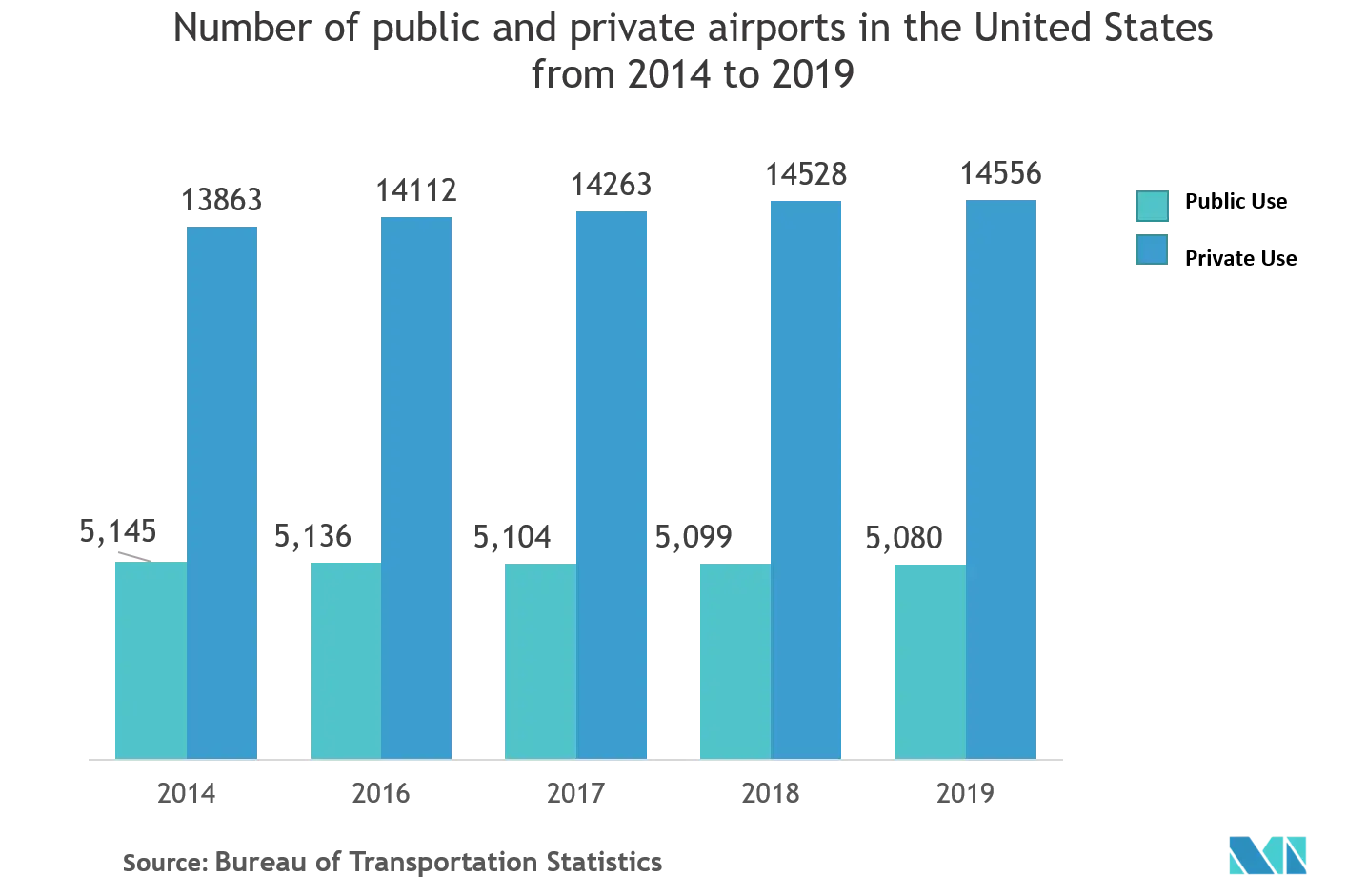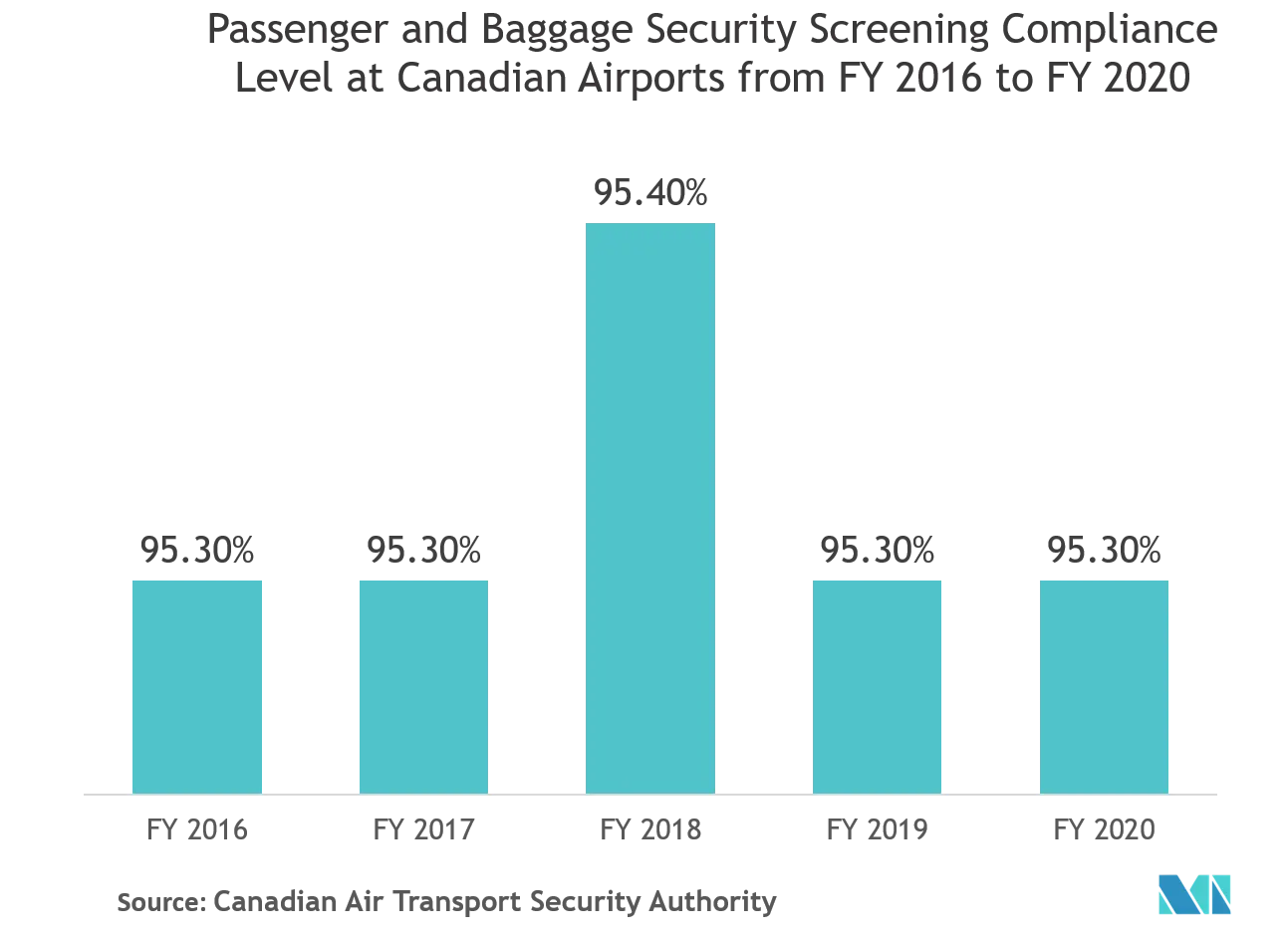Market Trends of North America Security Screening Industry
This section covers the major market trends shaping the North America Security Screening Market according to our research experts:
Airports are expected to Hold SIgnificant Share
- The growing air transport freight in North America, especially in the United States, is increasing concerns toward the goods being transported. The stringent regulations against terrorism are increasing the need for high-end security systems that detect hazardous weapons in the freight, thereby, reflecting the growth of the security screening market.
- Around 172 airports across the United States have full-body X-ray scanners at airport security. Some of these airports are A.B. Won Pat International Airport, Atlanta Hartsfield-Jackson International Airport, Austin-Bergstrom International Airport, and Baltimore/Washington International Thurgood Marshall Airport.
- The Transportation Security Administration (TSA) has demonstrated computed tomography scanners at an airport security checkpoint. The computed tomography unit is the latest checkpoint X-ray scanning technology to enhance threat detection capabilities for carry-on baggage.
- The Transportation Security Administration, along with American Airlines, launched a new type of 3D X-ray scanner, which can offer the screening staff better and more comprehensive images of carry-on bags. The new technology uses computed tomography to produce 3D images of each scanned bag.
- Drug trafficking is one of the major issues in the country. According to the U.S. Customs and Border Protection, drug seizures along the maritime borders have seen a considerable rise in illicit trade. In 2018, the United States Coast Guard confiscated packages of illegal narcotics from 15 vessels in international waters off the coasts of Central and South America.

Canada is Expected to Witness Significant Growth
- Canada is expected to witness significant growth in demand for security screening equipment. The country is adopting various security measures to screen passengers. Travelers passing through Canadian airports are asked about any previous visits to the Hubei province in China, Italy, or Iran, due to the increasing security concerns over the ongoing pandemic.
- Many Canadians returning from international travel were not being properly screened at the airports while being advised to self-isolate for 14 days, which seemed to be extremely concerning due to the COVID-19 outbreak. The Canadian government has announced a policy for the increasing need for security screening at airports. However, it is important for the government to ensure that this policy is being enforced and that frontline staff has the necessary resources and support.
- Canadian airlines screen passengers before they board flights bound for the country. Air Canada's union, which is the Canadian Union of Public Employees (CUPE), announced additional pre-flight screening by making flight attendants responsible for the screening. Furthermore, the union announced that airports or airlines should have specially trained personnel assigned.
- Calgary International Airport, an international airport in Canada, recently added a new security checkpoint as a long-term solution to reduce heavy crowding during peak times. The airport is facing challenges with security screening.
- New screening lanes were added near the airport’s B Pier to reduce the wait time for domestic departures. The new lanes were open, representing a 30% increase in screening capacity. PBS-B is an interim solution while the airport and Canadian Air Transport Security Agency (CATSA) look at long-term solutions for consolidating domestic screening into one location in the future.
- The Canadian Security Intelligence Service (CSIS), the government’s security screening program, helps investigate and provide security assessments with lawful access to classified information or sensitive sites, such as major ports, nuclear facilities airports, or the Parliamentary Precinct.


